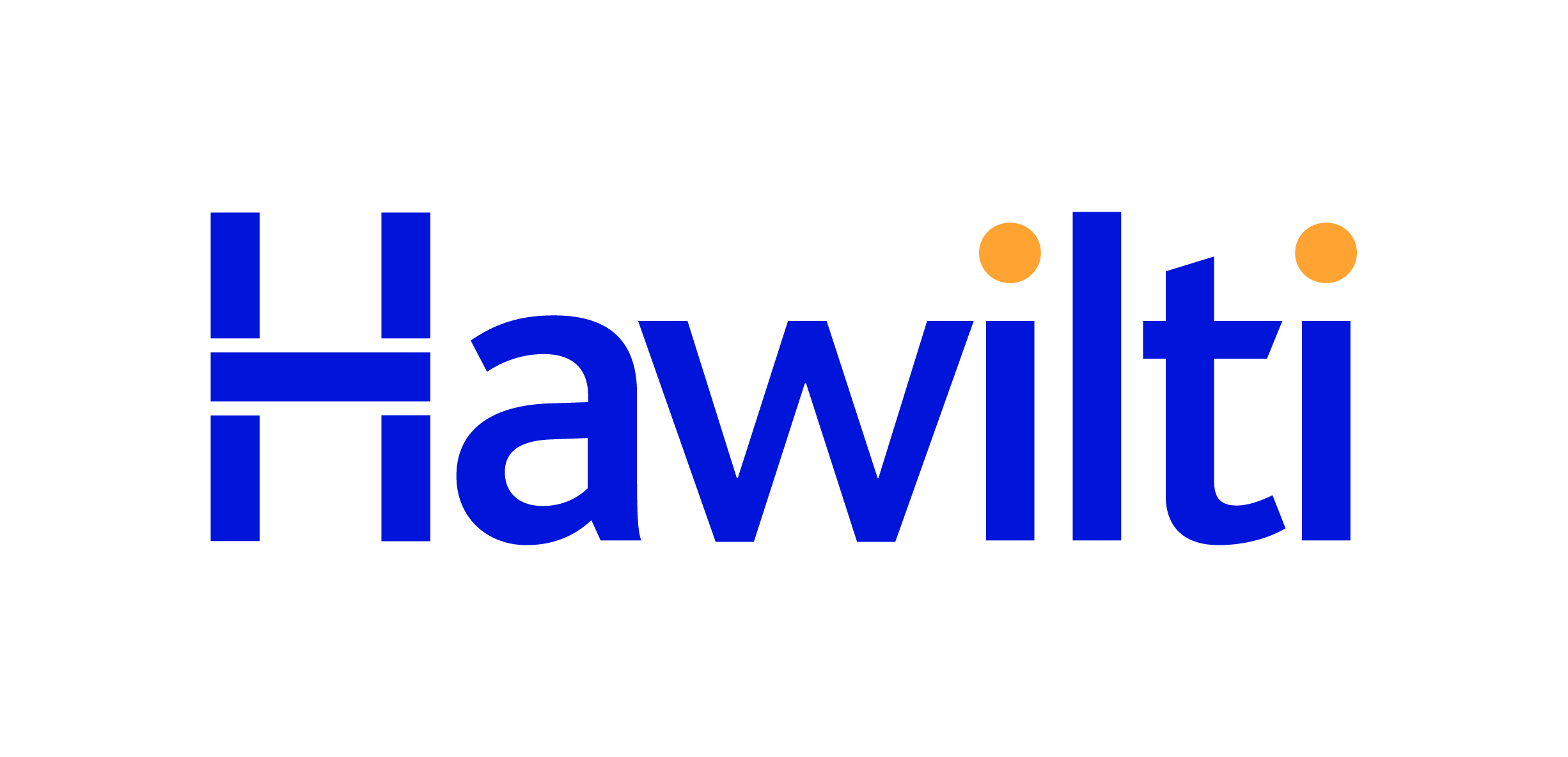Energy
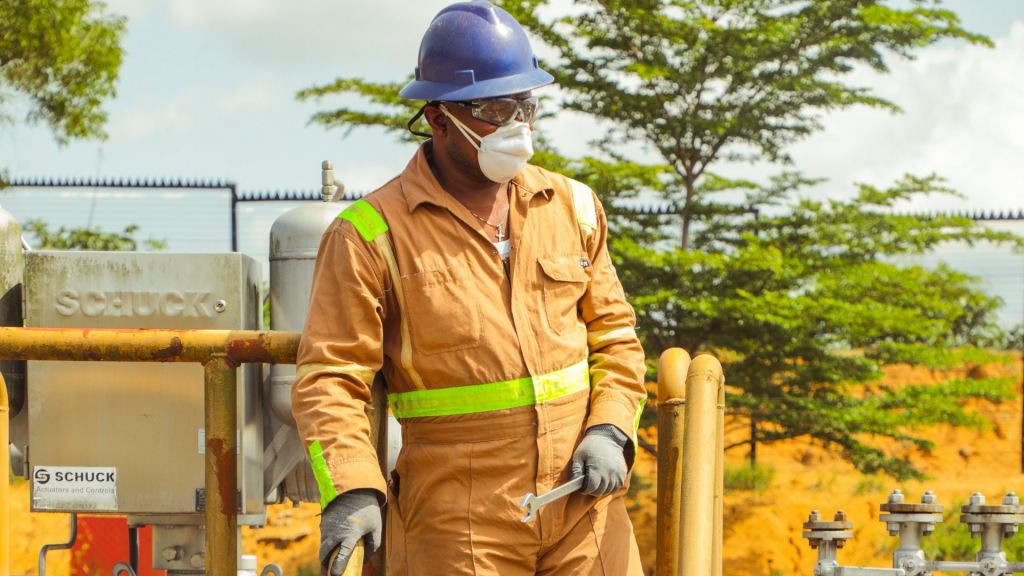
Savannah Energy signs agreements to acquire ExxonMobil and PETRONAS’ assets in Chad and Cameroon
After months of negotiations and site visits, Savannah Energy has announced the execution of share purchase agreements (SPAs) worth $626m with ExxonMobil and PETRONAS to acquire their oil & gas assets in Cameroon and Chad. The deals will see the British independent gaining a combined 75% controlling interest in the Doba Oil Project and 70% indirect controlling interest in the Chad-Cameroon oil export transportation system. Chevron had previously sold its 25% interest in the Doba Oil Project and 21% interest in the pipeline system in 2014 to the Government of Chad for $1.3bn. While negotiations with ExxonMobil had been announced earlier this year, the acquisition of PETRONAS’ interests in both countries was not expected. The transaction will see Savannah Energy expand its African portfolio, which already comprises upstream oil operations in Niger and upstream and midstream gas operations in Nigeria. The ExxonMobil Acquisition – $360m Savannah Energy is acquiring ExxonMobil’s entire upstream and midstream asset portfolio in Chad and Cameroon for $360m. The acquisition will be funded through a mixture of debt and equity/equity-linked financing and the SPA has an economic effective date of January 1st, 2021. Concretely, Savannah Energy is acquiring a 40% interest and operatorship of the Doba Oil Project, an onshore oil business with a production of 33,700 barrels of oil per day (bopd) in 2020. It is also acquiring a 40% indirect interest in the Chad-Cameroon oil export transportation system, that comprises the 1,081km Chad-Cameroon oil pipeline and the Kome Kribi 1 floating, storage and offloading (FSO) vessel offshore Cameroon. Last year, the pipeline transportated an average of 129,200 bopd. The facilities have been operating since 2003 and the pipeline remains the only evacuation route for Chad’s oil and is used by several operators. According to Hawilti’s research, the current list of pipeline beneficiaries include China National Petroleum Corporation International Chad, Cliveden, Royalty In Kind, Société des Hydrocarbures du Tchad (SHT), ExxonMobil, Petronas, Petro Chad Mangara, Glencore and Petroleum Chad Company Limited. The PETRONAS Acquisition – $266m Secondly, Savannah Energy is further consolidating its interest in the same assets by also acquiring PETRONAS’ entire upstream and midstream asset portfolio in Chad and Cameroon. The transaction is valued at $266m and the SPA also has an economic effective date of January 1st, 2021. Under this second transaction, Savannah Energy is acquiring an additional 35% interest in the Doba Oil Project and an additional 30% indirect interest in the Chad-Cameroon oil export transportation system. As a result of both acquisitions, Savannah Energy is acquiring a combined 75% controlling interest in the Doba Oil Project and 70% indirect controlling interest in the Chad-Cameroon oil export transportation system. The remaining interests are owned by the national oil companies of Chad and Cameroon. Details on the Chad-Cameroon Petroleum Development and Pipeline Project are available in the “Projects” section within your Hawilti+ research terminal.
Read more »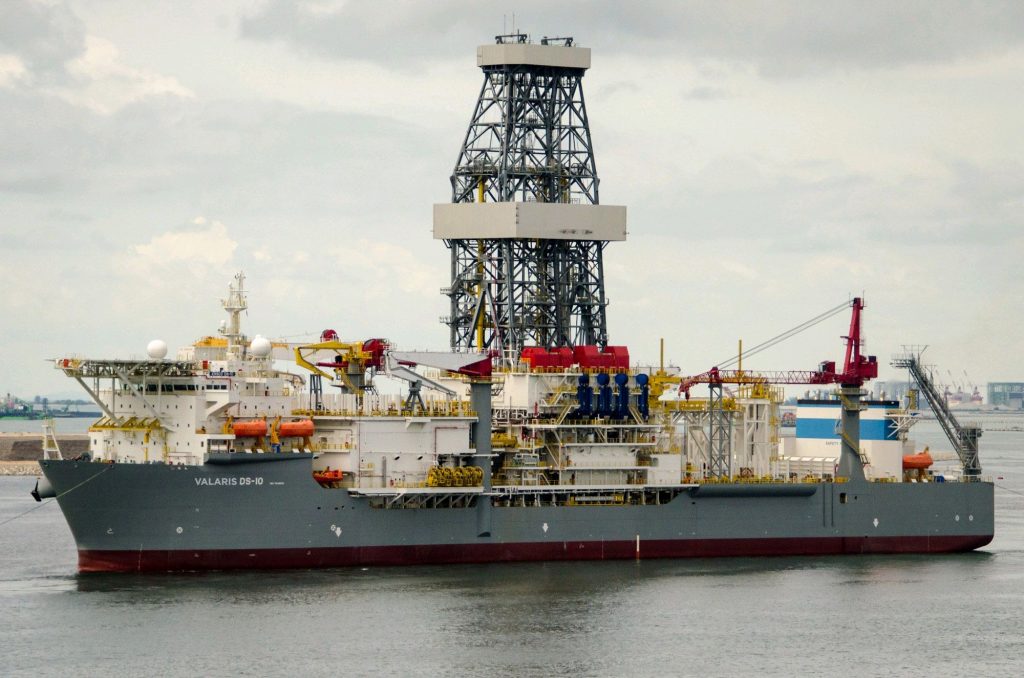
After TotalEnergies, Shell spuds its own high impact deep-water well in Namibia’s Orange Basin
The Valaris DS-10 drillship has spudded the Graff-1 well within Block 2013A (Petroleum Exploration License 39) offshore Namibia. Shell Namibia Upstream BV is operator with a 45% along with partners Qatar Petroleum (40%) and national oil company NAMCOR (10%). Namibia’s PEL 39 has been owned by Shell since 2014 when it acquired Signet Petroleum’s interests in both blocks 2913A and 2914B. It covers about 12,000 km2 on the Namibian/South African maritime border, within the Orange Basin, and remains one of the most prospective acreage in Southwestern Africa. Just two weeks ago, TotalEnergies spudded the Venus-1 well in its block 2913b, also located in the deep-waters of the Orange Basin. Both wells, if successful, could open up a brand-new hydrocarbons province offshore Namibia. Once the Valaris DS-10 completes Graff-1, it is expected to be deployed in the Gulf of Guinea to drill the Jaca-1 exploratory well. The well is located in the Galp-operated Block 6 offshore São Tomé-e-Principe, where Shell is a technical partner. It will be first well to be drilled in the deep-water Rio Muni Basin.
Read more »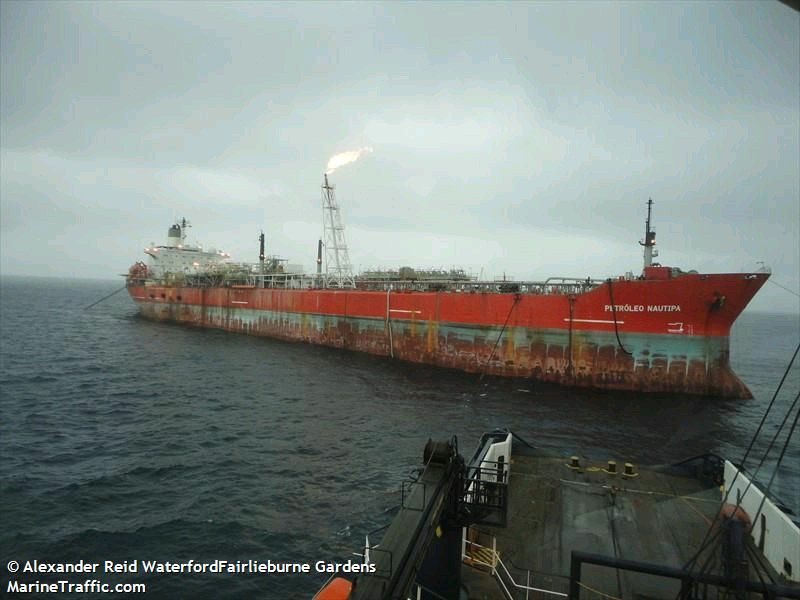
VAALCO Energy starts 4-well drilling campaign offshore Gabon
VAALCO Energy has spudded the Etame 8H-ST well offshore Gabon, the first of four wells that will be completed in 2022 at the company’s flagship project in Central Africa. Etame 8H-ST is a sidetrack of an existing well and is targeting existing Gamba hydrocarbons in the Etame field. This marks the beginning of a new drilling campaign in Gabon, executed by an affiliate of Borr Drilling. Upon completion in 2022, VAALCO Energy expects a production uplift of 7,000 to 8,000 barrels of oil per day (bopd). Etame produced an average of 15,650 bopd last year. Source: VAALCO Energy, Inc. The Etame Marin permit has been continuously producing for almost two decades in Gabon via the floating, production, storage and offloading (FPSO) vessel Petróleo Nautipa. It represents on average 10% of the country’s daily production of hydrocarbons. Earlier this year, VAALCO Energy consolidated its operated interest in the field following the closing of the acquisition of Sasol Gabon S.A.’s 27.8% working interest. Despite two decades of production that have seen over 121m barrels produced, the field is still estimated to have reserves and resources of about 113 million barrels. A recent extension until 2028 has notably paved the way for additional investment and drilling to maintain output. The contract for FPSO Petróleo Nautipa will expire in September 2022, after which the vessel will be replaced by a floating, storage and offloading (FSO) unit provided by World Carrier Offshore Services Corp. VAALCO Energy is also betting on additional exploration potential around Etame and provisionally secured a 37.5% non-operated interest in blocks G12-13 and H12-13 during Gabon’s 12th Licensing Bid Round that concluded in 2021. Both blocks’ areas surround the Etame complex and are now operated by BW Energy. Details on the development of the Etame Marin Permit are available in the “Projects” section within your Hawilti+ research terminal.
Read more »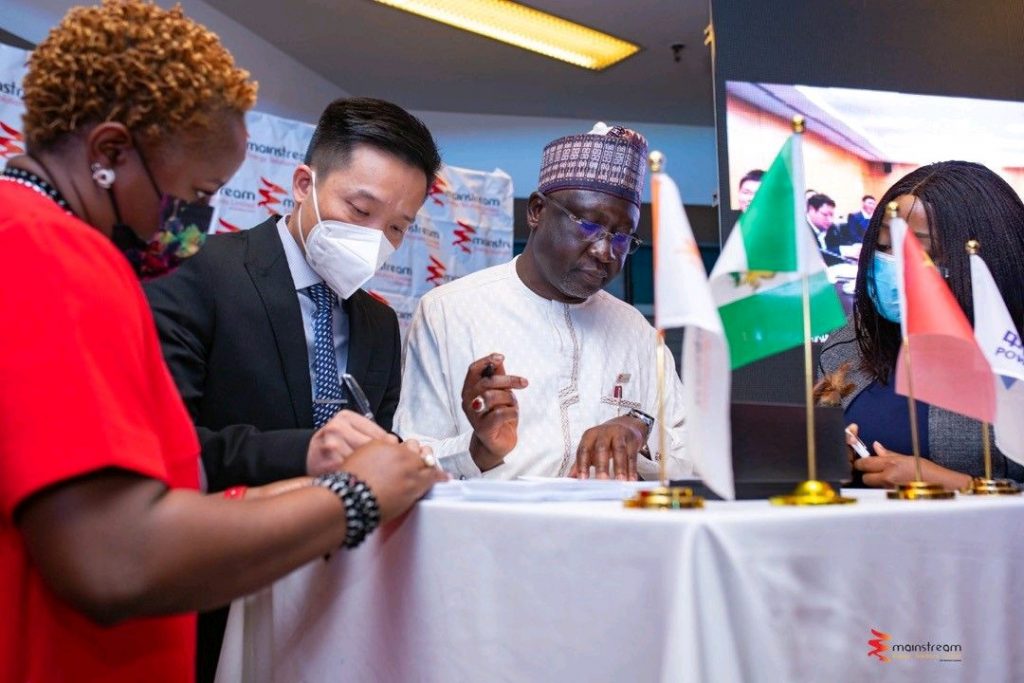
Mainstream Energy Solutions selects contractor for an additional 300 MW at Kainji hydropower plant in Nigeria
Mainstream Energy Solutions (MESL) signed a contract yesterday in Abuja with Power China Huadong Engineering Corporation for rehabilitation works at its Kainji hydroelectric facility in Nigeria. MESL has been operator of the 760 MW Kainji hydropower plant and the 578.4 MW Jebba hydropower plant in Nigeria since their privatization in 2013. The contract signed yesterday covers the rehabilitation of the Unit 1G9 (80 MW) and the installation of units 1G3 and 1G4 (110 MW each) at Kainji. Rehabilitating Nigeria’s First and Oldest Hydropower Facility Kainji can accommodate a total of 12 turbine-generator units but originally consisted in only eight of them, numbered from 5 to 12. Combined, these are able to support 760 MW of generation capacity. The first of those units were commissioned in 1968, making the facility Nigeria’s first and oldest hydropower plant. When MESL acquired the station in 2013 and became its private concessionaire, Kainji’s available capacity was at 0 MW. Since privatisation, five units were successfully rehabilitated (units 5, 6, 7, 11 and 12) and the plant currently operates with 520 MW of capacity connected to the grid. Unit 7 was the last one to be rehabilitated and was connected to the Nigerian grid in Q4 2021. The contract signed yesterday with Power China Huadong Engineering Corporation will notably focus on rehabilitating a sixth turbine-generator (unit 9) to bring back another 80 MW online. This will eventually leave only two of the original eight units to be recovered and rehabilitated: unit 8 and unit 10. Expansion from New Units While the facility is already widely seen as a true success story of Nigeria’s power privatisation programme, more can be done. The project with Power China Huadong Engineering Corporation will indeed see the installation of two new units of 110 MW each. In doing so, MESL is going back to the original design of the power plant which provided for the accommodation of units 1 to 4. These never materialized, but the required civil structure and open pits are still in place to do so. The two new turbine-generator units will represent the initial unit 3 and unit 4 and add another 220 MW of generation capacity to the complex. The agreement signed yesterday is significant and will eventually see Kainji’s available generation capacity increase from 520 MW today to 820 MW in the near future. Moving forward, MESL still has the opportunity to recover units 8 and 10, representing a combined 160 MW, and install units 1 and 2 to add another 220 MW. In total, the Kainji facility could ultimately support up to 1.2 GW of clean power generation for the Nigerian grid. Details on the Kainji and Jebba hydropower plants in Nigeria can be found in the “Projects” section within your Hawilti+ research terminal.
Read more »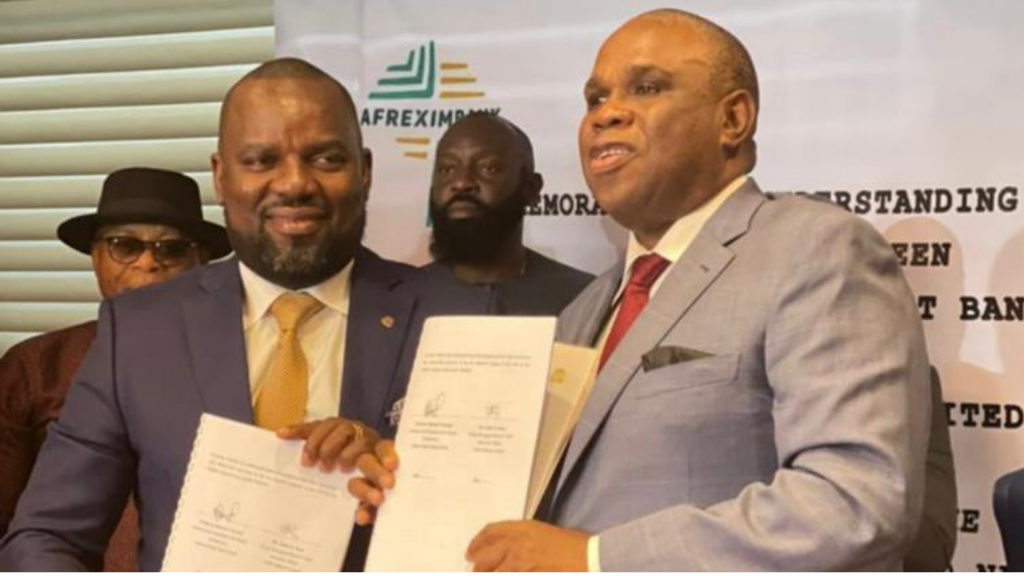
UTM Offshore signs $2bn MoU with Afreximbank for Nigeria’s first FLNG project
Nigerian marine and services group UTM Offshore and the African Export-Import Bank (Afreximbank) have signed a Memorandum of Understanding (MoU) to raise $2 billion for the development of Nigeria’s first floating liquefied natural gas (FLNG) project. The MoU was signed yesterday in Abuja by Julius Rone, Group Managing Director/CEO of UTM Offshore and Dr. Benedict Okey Oramah, President and Chairman of Afreximbank. “This is a landmark project that Afreximbank takes very seriously,” Afreximbank’s president said. The agreement paves the way for additional collaboration between UTM Offshore and the Afreximbank to support a future final investment decision (FID) on UTM’s FLNG project. The company has been studying and conceptualising the development of an FLNG in Nigeria since 2020. In February 2021, it received a License to Establish (LTE) from Nigeria’s former Department of Petroleum Resources (DPR) for the installation of an FLNG unit on oil mining lease (OML) 104. The block is operated by the joint-venture of Mobil Producing Nigeria (operator, 40%) and the state-owned Nigerian National Petroleum Corp. (NNPC, 60%) and contains the producing Yoho field. Preparations for the project are now in full swing and benefit from robust global and technical expertise. The pre-Front End Engineering Design (Pre-FEED) contract was awarded to JGC Corporation of Japan in May and completed in October. KBR was appointed Owners Engineer while global energy and commodities trader Vitol has also joined the consortium as off-taker for the LNG. “The UTM Offshore FLNG will be the first such project developed by an African company on the continent. It will also significantly contribute to the Nigerian government’s agenda of reducing the flaring of associated gas across our industry. As Africa’s FLNG industry grows, we are well positioned to offer attractive project economics by developing shallow water gas reserves, while bringing significant environmental benefits to our industry as a whole.” Julius Rone, Group Managing Director/CEO, UTM Offshore The project notably involves the development and financing of a 1.2m tonnes per annum FLNG facility with a capacity to process 176 MMscfd of natural gas and condensate. The unit would target the processing of associated gas currently flared in order to cut carbon emissions and monetise additional reserves for the domestic and global markets. UTM Offshore is pioneering the development of the FLNG facility in collaboration with LNG Investment Management Services (LIMS), a subsidiary of the state-owned Nigeria National Petroleum Corporation (NNPC). Details on the UTM FLNG can be found in the “Projects” section within your Hawilti+ research terminal.
Read more »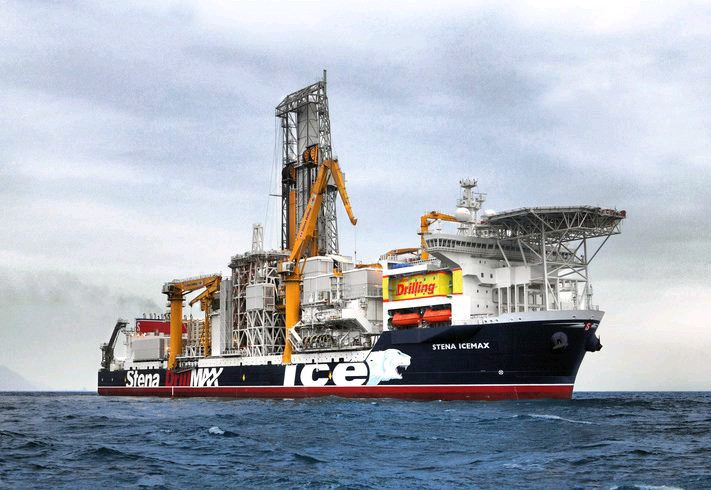
FAR Ltd “encouraged” by preliminary findings at Bambo-1 offshore The Gambia
Australian independent FAR has advised that the Bambo-1 well offshore The Gambia has drilled 3,216m measured depth below the rotary table (MDBRT) out of 3,450m. The well has detected oil indications in rock cuttings and logging whilst drilling (LWD) data has interpreted hydrocarbons across several intervals. “Further wireline logging needs to be completed to confirm the finding,” Far said this morning. The company has also announced an increase in the drilling campaign’s cost after significant fluid losses were experienced, forcing the temporary halt of drilling operations. FAR is now planning to plug and side-track the well to continue drilling to the planned total depth. As a result, completing the Bambo-1 well is now expected to cost a total of $61.27m, up from $51.4m. According to FAR, the addition of the side-track programme has also extended the period of operation. Completion is now expected at the very end of 2021. Bambo-1 was spudded in mid-November and is drilling into a series of vertically staked targets with a combined estimated recoverable prospective resource of over 1 billion barrels. Chances of geological success range from 7% to 36%. It is FAR’s second exploratory well on the A2 Block after it drilled the Samo-1 well in 2018. Its main targeted horizons had then proved water bearing. FAR’s success case planning at Bambo-1 relies on a development of 150m barrels of oil via a 48,000 barrels of oil per day (bopd) floating, production, storage and offloading (FPSO) vessel. Three wells would then support production, gas and water injection operations.
Read more »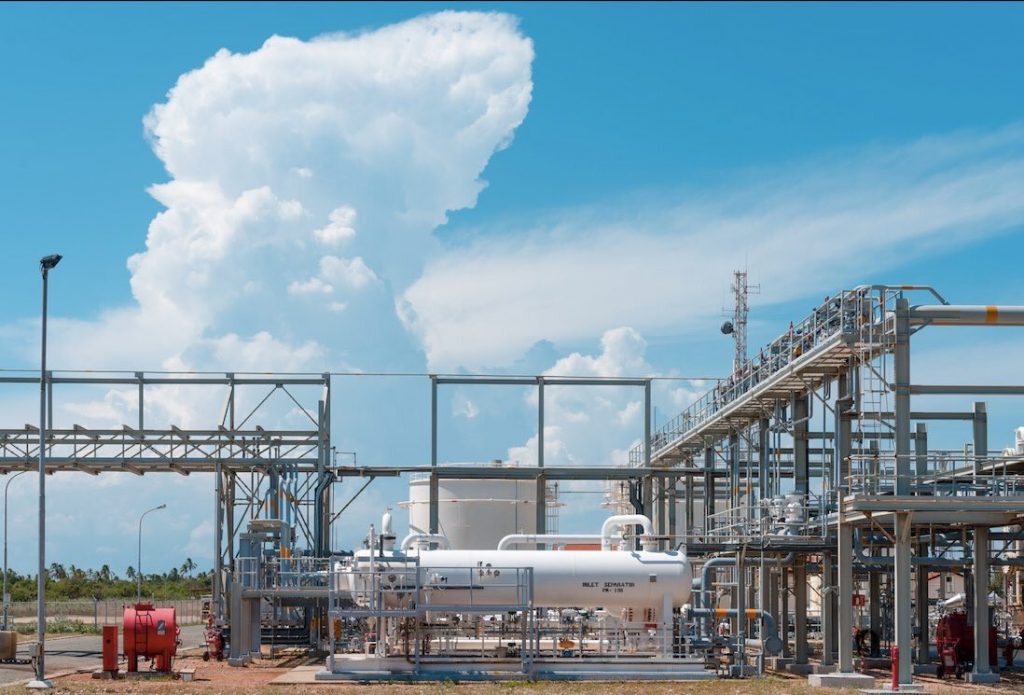
Tanzania: ORCA Energy submits $50m capex plan for Songo Songo development next year
The ORCA Energy Group has planned a $50m capex for the continued development of the Songo Songo gas project in Tanzania next year. Via its subsidiary PanAfrican Energy, ORCA operates the wells and gas processing plant at the Songo Songo island in central Tanzania. The 2022 programme includes $20 million for a 200 km2 3D seismic program over the Songo Songo development license, $11.5 million to expand the PanAfrican Energy’s existing downstream gas and CNG distribution system, and approximately $7 million for ongoing maintenance and facilities projects. The remaining $11.5 million represents the expenditures associated with the current work over program and inlet compression project, representing a combined $63m investment approved in 2019. The seismic programme would be pretty significant because PanAfrican Energy currently relies on 2D seismic lines ranging from 1978 to 2009. These are insufficient to maximise future upstream gas developments at Songo Songo. “The 3D seismic program is required to de-risk both the future development drilling in the SS gas field and potential exploration drilling of prospective resources prior to the SS license expiring in October 2026.,” ORCA said last week. Source: ORCA Energy Group ORCA continues to see potential for growth and gas production at Songo Songo, even beyond 2026. For now, it is projecting a gas production of at least 100 MMsfd for 2022, including about 40 MMcfd of Protected Gas reserves for the Tanzania Petroleum Development Corp. (TPDC). Details on the Songo Songo Integrated Gas Development are available in the “Projects” section within your Hawilti+ research terminal.
Read more »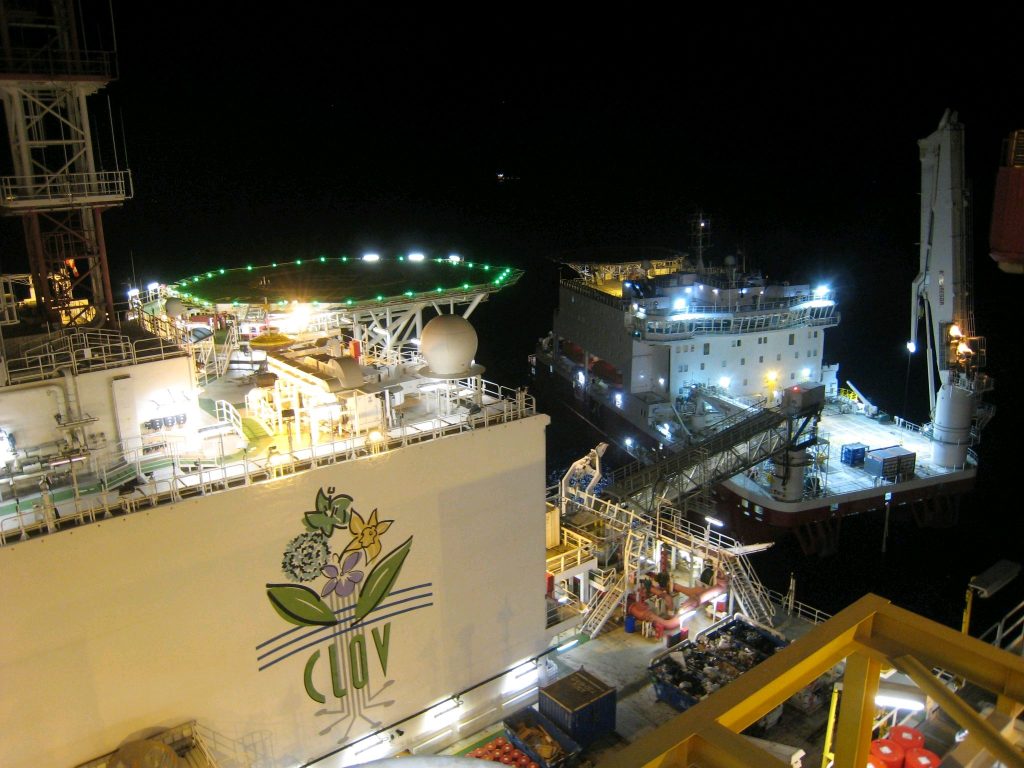
TotalEnergies start production at CLOV 2 tie-back offshore Angola
TotalEnergies has achieved first oil from a second subsea tieback project in Block 17 offshore Angola. The French major has announced start of production at CLOV 2 today, a new tie-back expected to reach a peak of 40,000 barrels of oil equivalent per day (boepd) in mid-2022. The entry into production of CLOV 2 via a tie-back to the CLOV FPSO follows that of Zinia 2 last May, via a tie-back to the Pazflor FPSO. Both projects have a production peak capacity of 40,000 boepd each. Block 17 includes a total of four floating, production, storage and offloading (FPSO) vessels: Girassol (2001), Dalia (2006), Pazflor (2011) and CLOV (2014). It remains by far Angola’s biggest producing asset. Source: MinFin Since 2018, TotalEnergies has been engaged in a significant redevelopment of the block. The move was supported by an exrension of standardization of the dates for the production periods of most areas on the license in 2020. All are now valid until December 31, 2045. After Zinia 2 and CLOV 2, TotalEnergies is expected to achieve first oil from Dalia 3 in 2022, and from CLOV 3 in 2023. Details on the development of Block 17 offshore Angola are available in the “Projects” section within your Hawilti+ research terminal. Hawilti also publishes, twice a year, a detailed market report on Angola’s oil & gas sector available within its terminal.
Read more »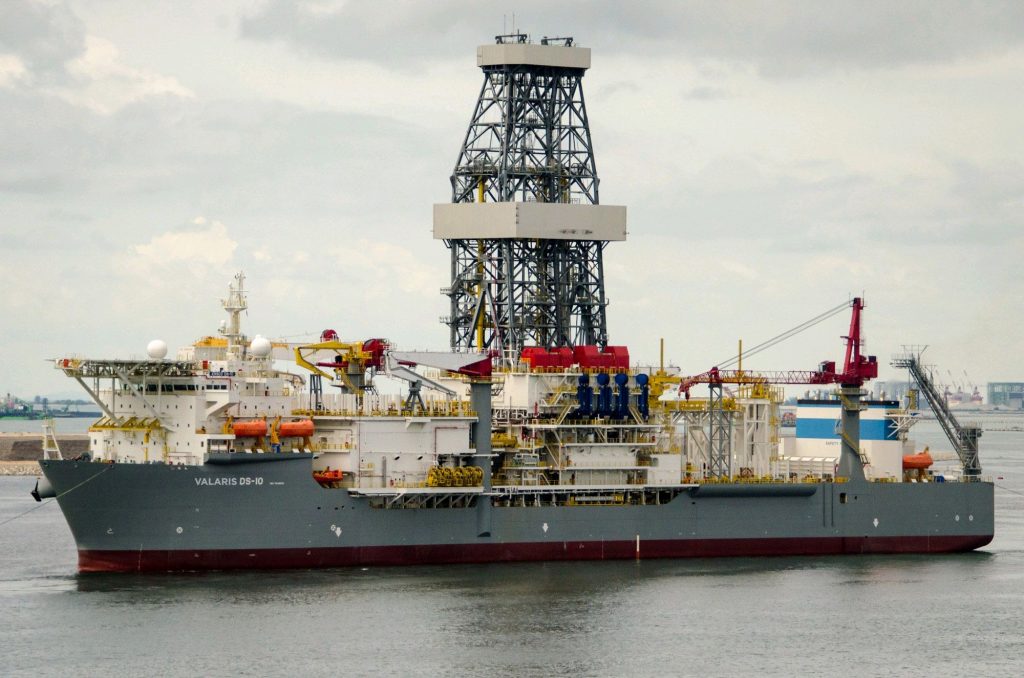
Eyes on the Prize: African exploration is back!
Independents and international oil companies (IOCS) have finally spudded several much-awaited exploratory wells in Africa this quarter. They signal the resumption of exploratory drilling activity, in a continent that remains heavily under-explored. While Eni has led exploratory efforts this year so far with three discoveries in Angola (Cuica), Ghana (Eban) and Côte d’Ivoire (Baleine), additional operators have now taken the lead in hopes of closing 2021 with even more success. Bamboo-1X, FAR, The Gambia Drilling commenced in mid-November at Bambo-1 offshore The Gambia. Operator FAR Ltd is targeting three key prospects there: Soloo, Bambo and Soloo Deep. Resources are estimated at a maximum of 1.118 billion barrels and chances of success range between 7% to 37%. Drilling is executed by Stena Drillmax Ice. In case of a discovery, FAR has indicated that 90m barrels would be the set minimum economic field size. Its success case planning relies on a development of 150m barrels of oil via a 48,000 barrels of oil per day (bopd) floating, production, storage and offloading (FPSO) vessel. Three wells would then support production, gas and water injection operations. FAR is operator with a 50% working interest in the A2 and A5 permits with its joint venture partner, PC Gambia Ltd (50%), a subsidiary of Petroliam Nasional Berhad (PETRONAS). Jove Marine-1X, Petronas, Gabon Petronas spudded the Jove Marine-1X well in block F13 offshore Gabon in early November 2021. The Malaysian national oil company hopes to replicate its 2018 success with its nearby Boudji discovery. Drilling is executed by the Maersk Viking. Jove-1X is testing a four-way dip closure in the pre-salt Gamba and Dentale formations in the distal portion of the Lower Congo Basin. A discovery there would be welcomed news for Gabon after disappointing results from BW Energy’s exploration campaign earlier this year in the same area. Ondjaba-1X, TotalEnergies, Angola Activities at TotalEnergies’ Ondjaba prospect in Block 48 offshore Angola started back in October 2021. The well was drilled by the Maersk Voyager, which has since then moved to Namibia where it is currently drilling the Venus prospect. The Ondjaba-1 exploratory well was expected to reach 3,628m, setting a new world record. Block 48 is operated by TotalEnergies (40%) along with Angola’s national oil company SONANGOL (30%) and Qatar’s national oil company Qatar Petroleum (30%). Venus-1X, TotalEnergies, Namibia Venus-1X was spudded earlier this week offshore Namibia within Block 2913b, by the Maersk Voyager. The well will target an enormous middle Cretaceous basin floor fan at the toe of the Orange river delta, targeting a potential of 1 billion barrels of oil. Venus is one of two wells that, if proved successful, would significantly transform Namibia’s energy landscape and economy. Block 2913b is operated by Total E&P Namibia B.V. along with Qatar Petroleum (30%), Impact Oil and Gas (20%), and NAMCOR (10%). Graff-1X, Shell, Namibia November also marked commencement of exploratory drilling on PEL 39 offshore Namibia. The license is held by Shell and contains the Graff prospect. Like Venus, Graff is located within the Orange Basin and close to the South African maritime border. The Valaris DS-10 is mobilized for the campaign and is expected to then move to São Tomé-e-Principe to drill Jaca-1X on Block 6. PEL 39 is operated by Shell Namibia Upstream BV (45%) along with partners Qatar Petroleum (40%), and NAMCOR (10%). Sibiri-1X, Seplat Energy, Nigeria Last but not least, Seplat Energy is targeting the 78m barrels Sibiri prospect on OML 40 in Nigeria. The Sibiri exploratory well (previously known as Amobe) is one of the few exploration prospects being drilled in the country this year and is expected to help further increase the resource base on OML 40 where the wells on the Gbetiokun field are currently producing a peak of 12,000 barrels of oil per day (bopd). Preparatory activities for drilling of the high-impact prospect have been ongoing for a while. According to Seplat Energy, Sibiri carries a risked best estimate gross prospective oil resource of 78m barrels. The operator has already evaluated several options to accelerate the development of the discovery and achieve first oil in the event of exploration success. OML 40 is operated by the Nigerian Petroleum Development Company (NPDC, 55%) along with its partner Elcrest Exploration and Production Company Limited (Elcrest, 45%). Elcrest is itself a Joint Venture between Eland Oil and Gas (Nigeria) Limited (45%) and Starcrest Nigeria Energy Limited (55%). Seplat Energy acquired Eland Oil and Gas in 2019.
Read more »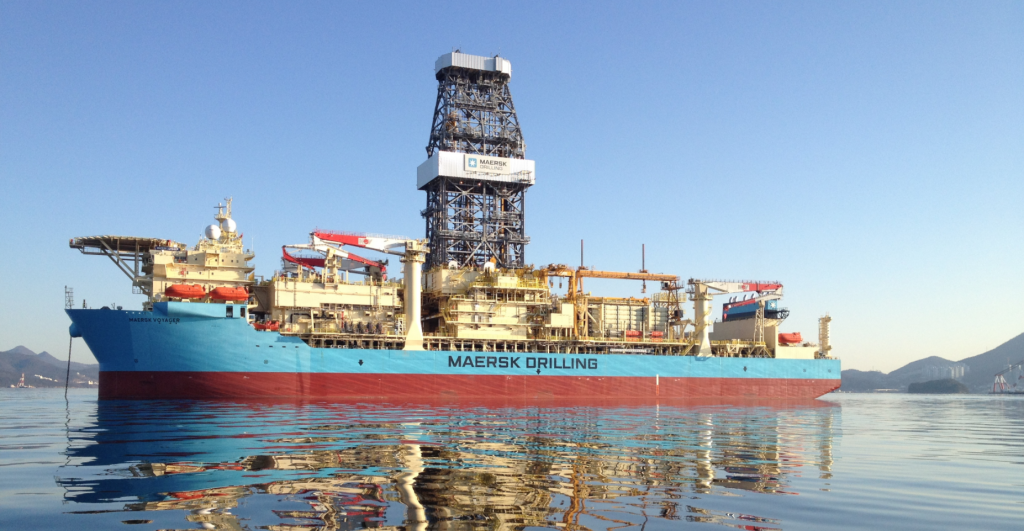
TotalEnergies spuds most anticipated well of the year offshore Namibia
The 7th generation drillship Maersk Voyager has spudded the Venus-1 well within Block 2913b offshore Namibia. The block is operated by Total E&P Namibia B.V. (40%) along with its partners Qatar Petroleum (30%), Impact Oil and Gas (20%), and national oil company NAMCOR (10%). Namibia’s Block 2913b is located in the ultra-deep waters of the Orange Basin and at the maritime boundary with South Africa. Its Venus prospect is believed to be one of Africa’s most promising offshore prospects and could result in a multi-billion barrels discovery. The well will target an enormous middle Cretaceous basin floor fan at the toe of the Orange river delta, targeting a potential of 1 billion barrels of oil. Venus-1 is one of two very important exploratory wells being drilled offshore Namibia in Q4 2021. The second one is Graff-1 on PEL 39, operated by Shell Namibia Upstream (45%) along with its partners Qatar Petroleum (40%) and Namcor (10%). Valaris was selected to execute the drilling campaign at Graff. Details on Block 2913b and PEL 39 exploration are available in the “Projects” section within your Hawilti+ research terminal.
Read more »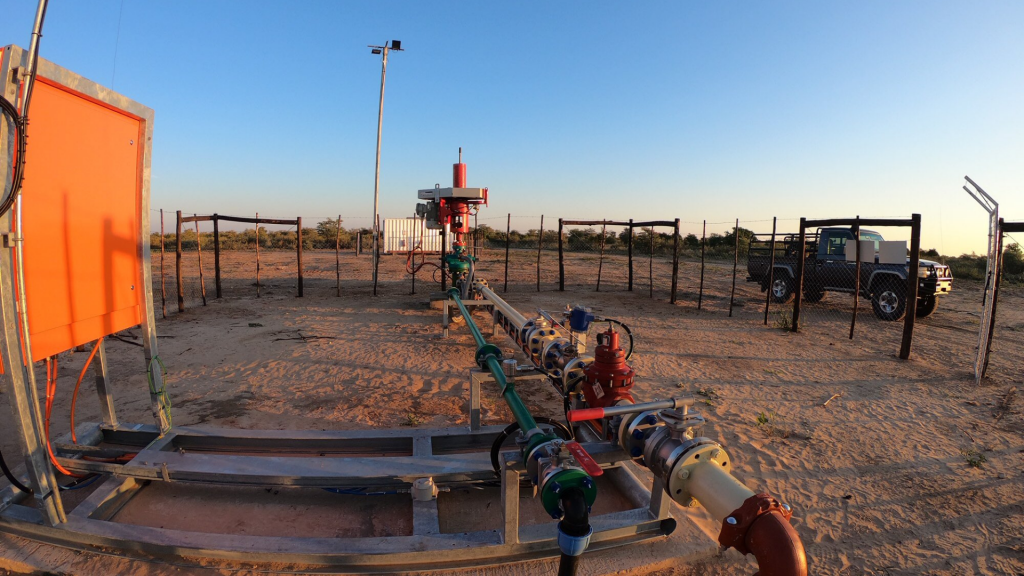
Tlou Energy secures institutional money for Lesedi CBM-to-power project in Botswana
Tlou Energy has announced today the signing of a BWP 50m ($5m) convertible loan agreement with the Botswana Public Officers Pension Fund (BPOPF). The note has a maturity of five years and interest rate of 7.75% per annum. The agreement also includes an equity investment by BPOPF. Preliminary terms include a further BWP 50m ($5m) equity investment post 1 July 2022. “The funds are planned to be used to finance construction of transmission line infrastructure to connect the Lesedi Project to the Botswana Power Corporation power grid and to fund installation of generation assets and ancillary costs to facilitate power generation and sale of electricity,” Tlou Energy said in a statement.
Read more »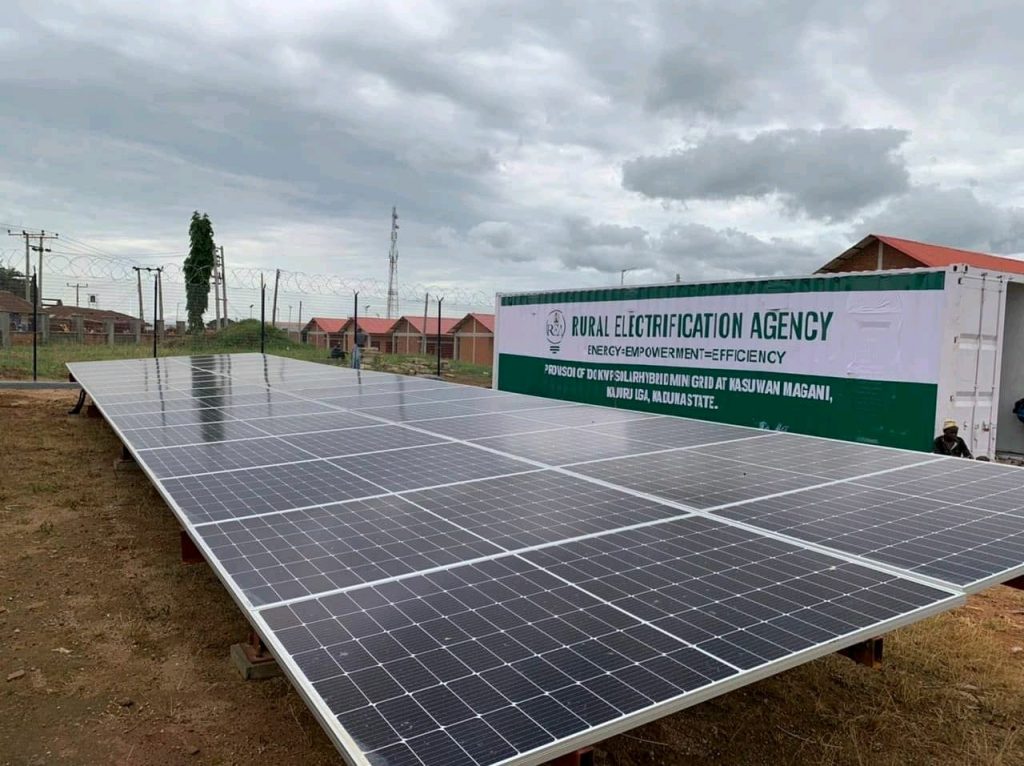
All On and partners launch $10m global aggregated renewable energy procurement programme in Nigeria
Nigerian impact investment company, All On, Odyssey Energy Solutions, and the recently launched Global Alliance for People and Planet (The Alliance) have launched this month a global aggregated procurement programme for renewable energy companies in Nigeria. The initiative is supported by a $10 million financing facility managed by All On. Dubbed “Demand Aggregation for Renewable Technology (DART)”, the programme will ensure that affordable, high quality solar products reach the communities most in need in Nigeria. If successful, the programme will then be piloted in four additional countries in Africa. In its core, the DART programme combines demand pooling and aggregated purchasing of solar equipment, access to affordable finance, and coordinated logistics processes to unlock economies of scale for solar companies and achieve cost savings for end users. The $10m All On-managed finance facility will provide debt funding for solar companies already approved by the Rural Electrification Agency (REA) for the Nigeria Electrification Program (NEP) to purchase lower-cost solar equipment through the DART.
Read more »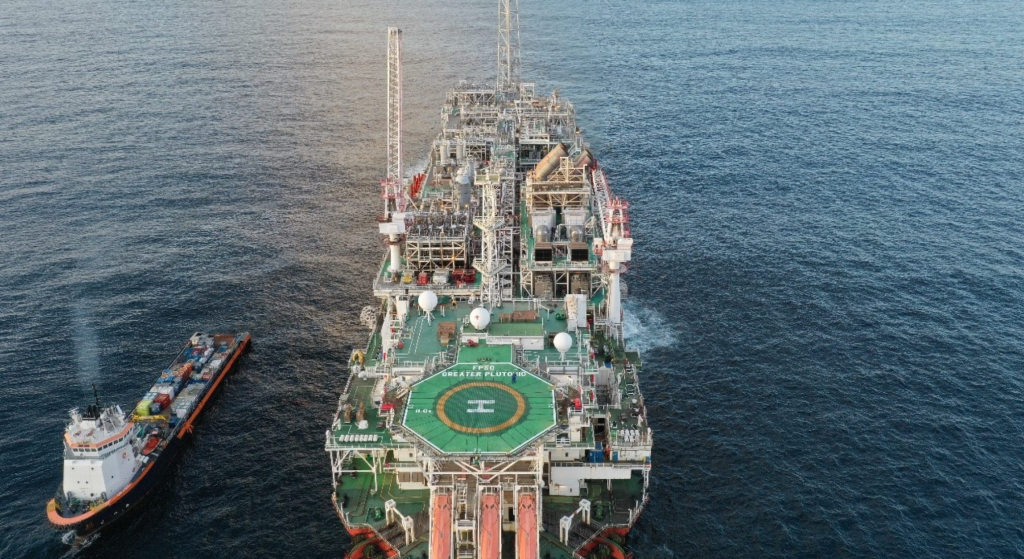
bp achieves first oil from subsea tieback project on Block 18 in Angola
bp has announced start of production from its Platina project on Block 18 offshore Angola. The field was brought online ahead of schedule and under the contractor’s group initial budget. The block is operated by bp Angola (Block 18) B.V. (36.34%) along with BP Exploration Beta (9.66%), Sonangol SSI (7.72%), and Sonangol E&P (16.28%). The project will develop an estimated 44m barrels of oil reserves and add 30,000 barrels of oil per day (bopd) to Block 18 production once it reaches its peak in 2022. In its 2022 budget, Angola expects Block 18’s output to grow by over 45% next year thanks to Platina. The field will contribute to reversing Angola’s production decline next year and bring back oil GDP to positive after six consecutive years in the red. The development by bp of the offshore Greater Plutonio area within Block 18 in Angola was the British major’s first operated asset in the country. Commissioned in 2007, the project initially developed five fields (Galio, Cromio, Paladio, Plutonio, and Cobalto) in water depths ranging from 1,200 to 1,450 m. The Greater Plutonio floating, production, storage and offloading (FPSO) vessel has a maximum throughput capacity of 240,000 barrels of oil per day (bopd), with a storage capacity of 1.77m barrels. Source: Ministry of Finance, Angola Block 18 forms part of Sonangol’s ongoing partial divestment process. The national oil company is currently divesting up to 8.28% in the license, which received one of the highest number of bids. Interested parties notably include Namcor, Falcon Oil, Somoil and MTI Energy. Details on the development of Block 18 offshore Angola are available in the “Projects” section within your Hawilti+ research terminal.
Read more »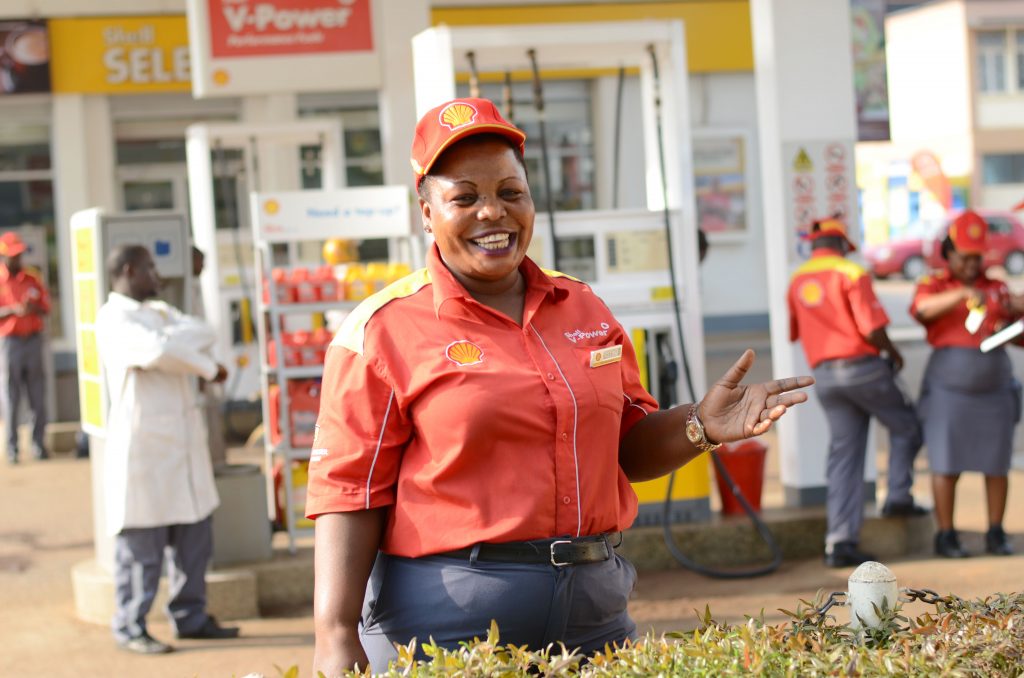
Vitol to acquire Vivo Energy’s remaining shares for approximately $2.3bn
Vivo Energy has announced it has reached an agreement on the terms of a recommended cash offer under which Vitol will be acquiring the entire issued and to be issued share capital of Vivo. Vitol will only be acquiring the shares it does not already own in Vivo Energy, via a BidCo, a company indirectly owned by Vitol Investment Partnership II Ltd. The total cash value of the deal is valued at $2.3bn. In December 2020, Vivo Energy’s key shareholders included Vitol (36.1%), Helios Investment Partners (27.23%) and Petronas Marketing International (3.93%). The announcement follows several attempts by the Vitol Group to acquire Helios Investment Partners’ shares in Vivo Energy. “Following a series of negotiations, BidCo and Helios agreed a price at which both parties would be willing to transact at a purchase price of US$1.79 per Vivo Share,” Vivo Energy said in a statement. Both companies were partners and founding shareholders of Vivo Energy, a company born of Shell’s divestment from all its African fuel retailing business in 2011. Vivo eventually completed an initial public offering in May 2018, pursuant to which its shares were admitted to trading on the Main Market of the London Stock Exchange and admitted to listing on the Official List, with a secondary listing on the Main Board of the JSE.
Read more »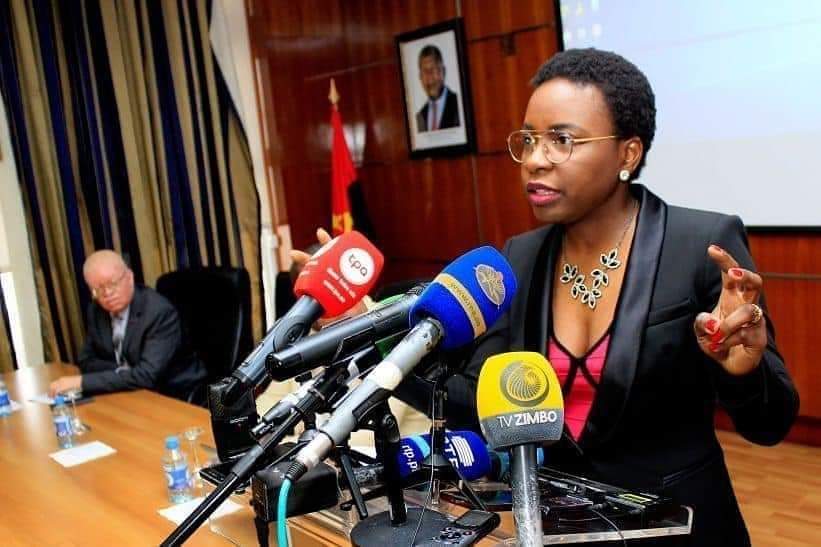
Angola’s Oil GDP to be back to positive in 2022 after six consecutive years in the red
Since 2012, Angola’s Oil GDP has grown only twice: in 2012 and 2015. But it is expected to grow again by +1.6% next year on the back of a projected marginal increase of about 2% in oil & gas output. Source: Angola’s Finance Ministry 2022 Budget Bets on 18,000 bopd Production Growth In its 2022 Budget Statement, Angola expects some of its existing producing offshore assets to support a marginal production growth of 18,000 barrels of oil per day (bopd) on average. Growth would notably come from BP’s Block 18 (+45.1%), Somoil’s Block 2/05 (+44.5%), Eni’s Block 15/06 (+7.9%), and Chevron’s Block 0 (+2.1%). Block 18 is expected to see the most incremental production growth thanks to the coming onstream of the Platina subsea tieback project, where drilling started in late 2020. The project targets the development of 44m barrels of oil reserves to add about 20,000 bopd of production to the block’s daily output. The integrated Engineering, Procurement, Construction and Installation (iEPCI™) contract for the project was awarded to TechnipFMC. On its side, Eni should achieve peak production from the Ndungu and Cuica fields, where first oil was achieved respectively in May 2019 and July 2021. The Italian major is also expected to complete phase 2 of its Agogo subsea tieback project, where first oil was achieved in January 2020. As a result, Angola is betting on average oil production of 1,147,910 bopd next year, up from a projected average of 1,130,090 in 2021. Natural gas production is also expected to increase by 4.2% to 134,100 barrels of oil equivalent per day (boepd). Source: ANPG Meanwhile, oil production will keep decreasing in other key producing assets but at a lesser pace than previous years. On Block 15, ExxonMobil is notably expected to start its drilling campaign next year, while TotalEnergies will also drill in Blocks 17 and 31 and put its Caril Pop-Up project onstream in Block 32. Consequently, production will decrease by “only” -9.6% in Block 15, -1.3% in Block 31, and -0.5 in Block 17, according to Angola’s Finance Ministry. Additional production on the back of strong oil prices necessarily mean that Angola will make money next year. The country is in fact expecting over 6 trillion kwanzas in oil revenue in 2022. This is about the same as what it will collect this year, but almost double its oil revenue of 2020. Details on all of Angola’s offshore oil blocks and projects are available in the “Projects” section within your Hawilti+ research terminal.
Read more »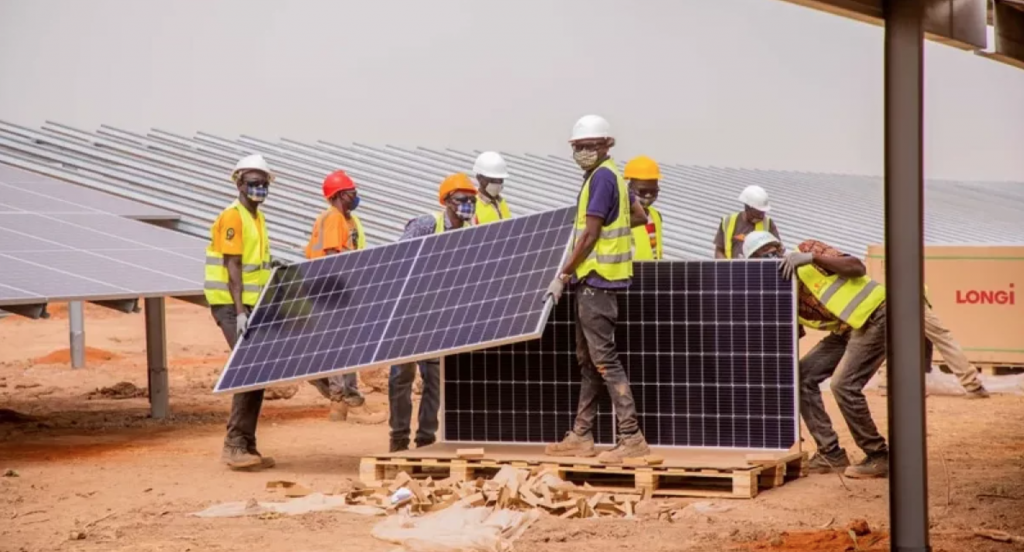
Burkina Faso makes headway towards 110 MWp of new solar PV capacity
Last week, the Dutch entrepreneurial development bank, FMO, announced the completion of financing and contracting for 110 MWp of solar PV capacity in Burkina Faso. In total, four different solar projects are now entering the construction phase: Kodeni Solar (38 MWp), Nagreongo-SPES Ouagagoudou (30 MWp), Quadran Burkina Faso (24 MWp) and Dedougou Solar (18 MWp). FMO is the prime lender to all projects, representing 52% to 65% of the debt raised for each facility. Its co-financiers include Proparco, the private sector financing arm of the French Development Agency (AFD), and the Interact Climate Change Facility (ICCF), a European co-financing vehicle notably involving the AFD, BIO, DEG, Finnfund, Norfund, OeEB, Proparco, SIFEM and Swedfund. FMO is proving a total of €90m for the projects, while the ICCF is providing €20.9M and Proparco the remaining €15.9m. The S.P.E.S Ouagadougou facility in Nagréongo remains the most advanced of the four projects. It officially broke ground in October 2020 during a ceremony presided over by Minister of Energy Dr. Bachir Ismaël Ouedraogo. Out of 344 MW of grid-connected generation capacity in Burkina Faso last year, only 60 MW was from renewable energy sources. By the time all new solar plants are completed and operational, the country’s total installed power generation capacity will have climbed to 456 MW. Almost 38% of the country’s energy mix will then rely on renewable energy.
Read more »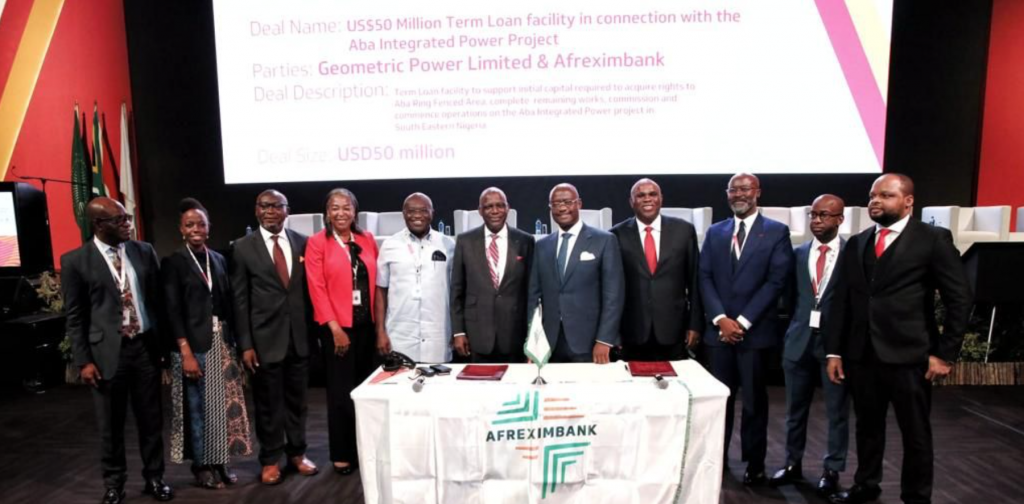
Nigeria: 188 MW Aba Integrated Gas-to-Power Project gets $50m boost from Afreximbank
Last week during the second Intra-African Trade Fair in Durban, the African Export-Import Bank (Afreximbank) signed a $50m term loan facility with Geometric Power Limited for its Aba Integrated Power Project in Nigeria. The facility will notably help finance the initial capital required to acquire rights to the Aba Ring Fenced Area within which electricity from the power plant will be distributed and sold. It will also support the completion of remaining works, and the commissioning and commencement of operations of the project. A Unique and Fully Integrated Gas-to-Power Project The Aba IPP has been in the making for quite some time and will be Nigeria’s first integrated and independent power utility. The project includes a 141 MW gas-fired power plant (licensed for 188 MW), a 27km gas pipeline, and a distribution utility selling power within a ring-fenced distribution network. The project is structured as an embedded electricity facility designed to generate and distribute its own electricity. Electricity will be generated by Geometric Power Aba Limited (GPAL), the entity that owns and operates the power station, but will be distributed by Aba Power Limited Electric (APLE). The former has a power generation license while the latter benefits from an electric distribution license. Gas feedstock will be supplied by the Shell Petroleum Development Co. (SPDC) joint-venture, with whom a gas supply and aggregation agreement (GSAA) was executed in late 2018. The agreement notably covers the supply of about 43 MMscfd of gas. “Being one of the only 24hr reliable power supplier, Aba IPP will revive moribund industries, power the Enyimba Economic City as well as markets such as the famous Ariaria International Market,” declared Geometric Power Chairman & CEO Prof. Bart Nnaji, who previously served as Nigeria’s Power Minister in 2011 and 2012.
Read more »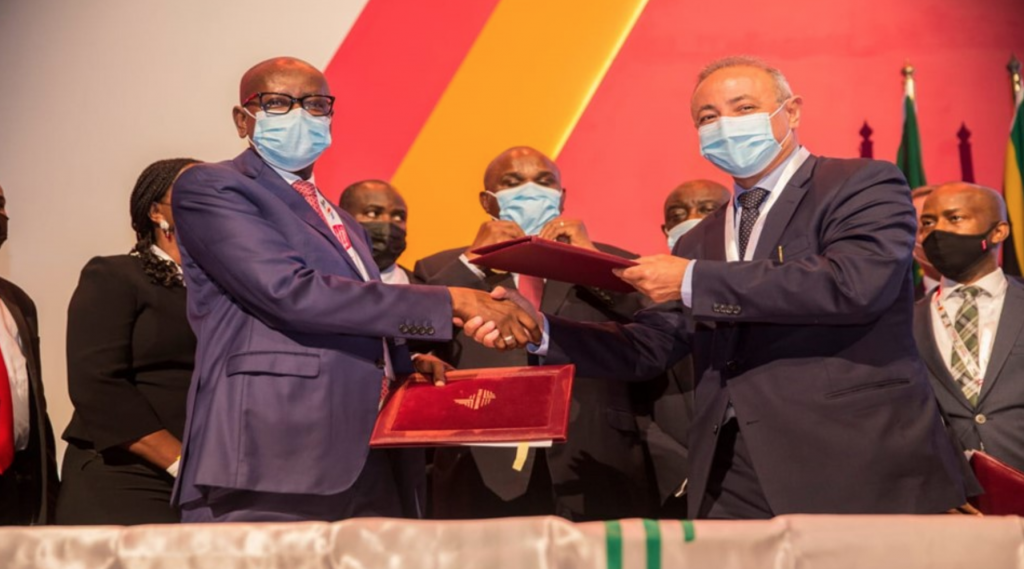
Afreximbank signs $2 billion in deals with Nigerian oil & gas companies
The African Export-Import Bank (Afreximbank) showed up for Nigeria’s oil sector this week in Durban, during the Intra-African Trade Fair 2021. The bank has signed three separate deals totaling almost $2bn with the state-owned Nigerian National Petroleum Corporation (NNPC), indigenous operator Eroton Exploration & Production and new Nigerian independent Mars Exploration & Production. A $1.04 bn exploration deal with NNPC The first agreement is a $1.04 billion facility with the NNPC to finance oil exploration in Nigeria. It notably notably comprises a pre-export/shipment finance facility underpinned by a forward sale agreement (FSA) and offtake contracts from the NNPC acting as the borrower and seller. Under the terms of the contract, NNPC will enter into an FSA within which it shall deliver 35,000 barrels of crude oil per day (bopd). The NNPC was represented by Umar I. Ajiya, Group Executive Director, Finance & Accounts while the Afreximbank was represented by Amr Kamel, Executive Vice President, Business Development & Corporate Banking. A Second Lending Facility to Eroton E&P The second agreement is a term-sheet that lays the basis for the approval of a $750m senior secured reserve-based lending facility with Eroton Exploration & Production, the Nigerian company that operates OML 18 with a 27% interest in the Niger Delta. IIt was signed by Chairman Onajite Okoloko. Other parties in the deal are Shell Western Supply & Trading and Midwestern Oil & Gas Company Limited. Midwestern is an indirect owner of Eroton E&P through its 60% ownership of Midwestern Leon Petroleum, which in turns owns Eroton E&P’s mother company Martwestern. Out of the full facility, $196m is expected to refinance Eroton’s current senior bank debt. The remaining is expected to help Eroton finance the acquisition of an additional 18% economic interest in OML 18 from Sahara Field Production Ltd (SFPL, 16.2%) and Bilton (1.85%). Afreximbank and Eroton have been working together since the Nigerian company acquired Shell’s interest in OML 18 back in 2015. The bank had then provided a $663m syndicated reserve base lending facility to Eroton. Financing AA&R’s Acquisition Spree The third and last deal is a $274m senior secured reserve-based lending facility to Mars Exploration & Production, a subsidiary of Nigeria’s AA&R Group. AA&R is in the process of acquiring several offshore licenses in Nigeria and details on the transaction are available within the Hawilti+ research terminal.
Read more »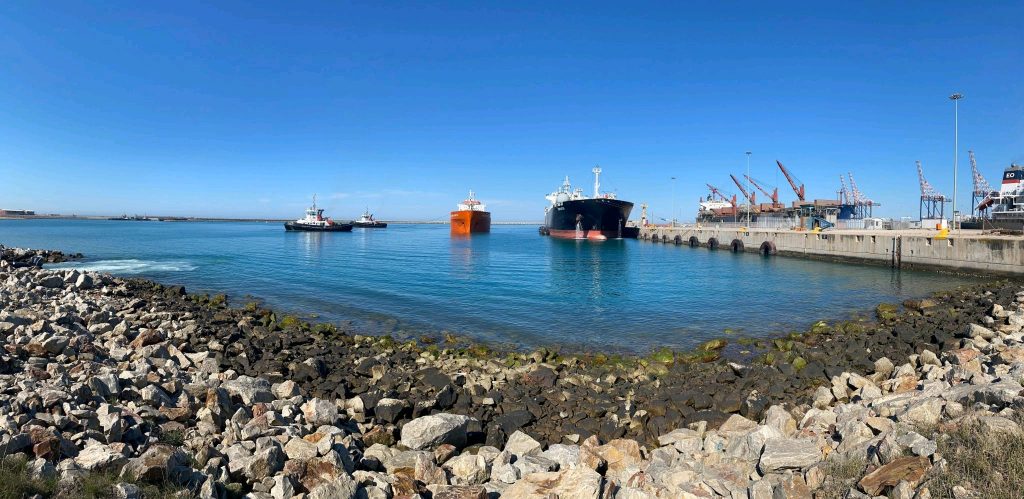
South Africa has received its first ever LNG shipment
South African LNG distributor DNG Energy has announced the arrival of South Africa’s first ever consignment of liquefied natural gas on Tuesday this week. The shipment arrived from Rotterdam and is a first for South Africa who has until now imported gas by pipeline from Mozambique. DNG Energy expects to commission a floating storage unit delivery in Q1 2022 in South Africa to support the country’s growing gas monetization agenda. The 8,000-ton LNG barge is currently being build in Durban by South African Shipyards. The company is notably working on providing gas to the road and maritime sector, especially for trucks, buses, and ships. In September this year, it partnered with Masana Petroleum Solutions to increase gas adoption within South Africa’s transport sector.
Read more »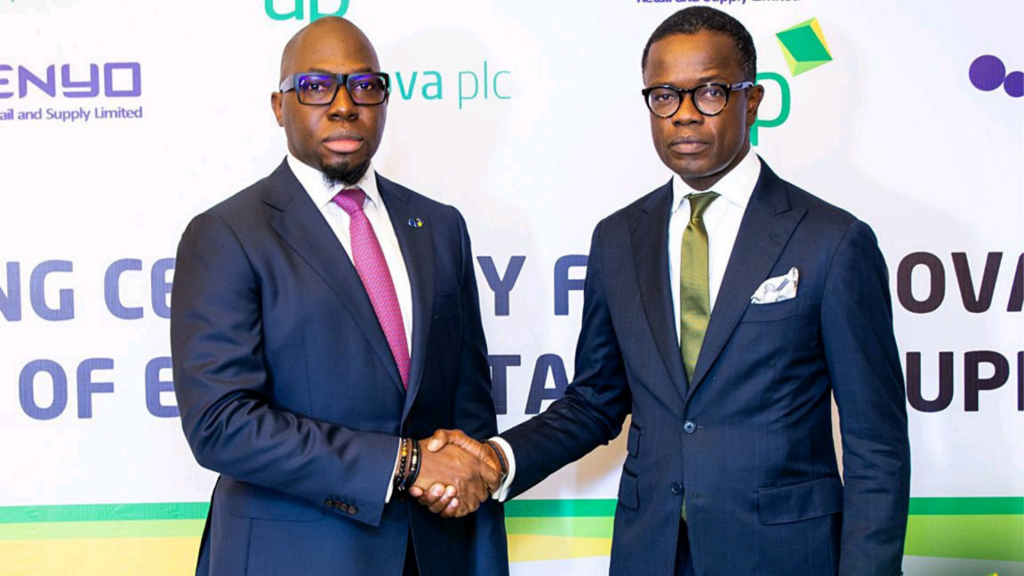
Ardova Plc completes acquisition of Enyo Retail & Supply Ltd in Nigeria
Nigerian energy and oil marketing company Ardova Plc has announced the completion of its 100% acquisition of Nigerian fuels retailing company Enyo Retail & Supply. Through this transaction, Ardova has grown its fuel retail stations by 95, bringing its total network in Nigeria to 545. The acquisition is part of ongoing consolidation in the Nigerian downstream market as oil marketers seek to achieve economies of scale to boost profitability. Earlier this month, RainOil also completed its acquisition of 63.6% of the shares of Eterna Plc though its investment arms, Preline Ltd (60.9%) and Norsworthy Investments (2.6%).
Read more »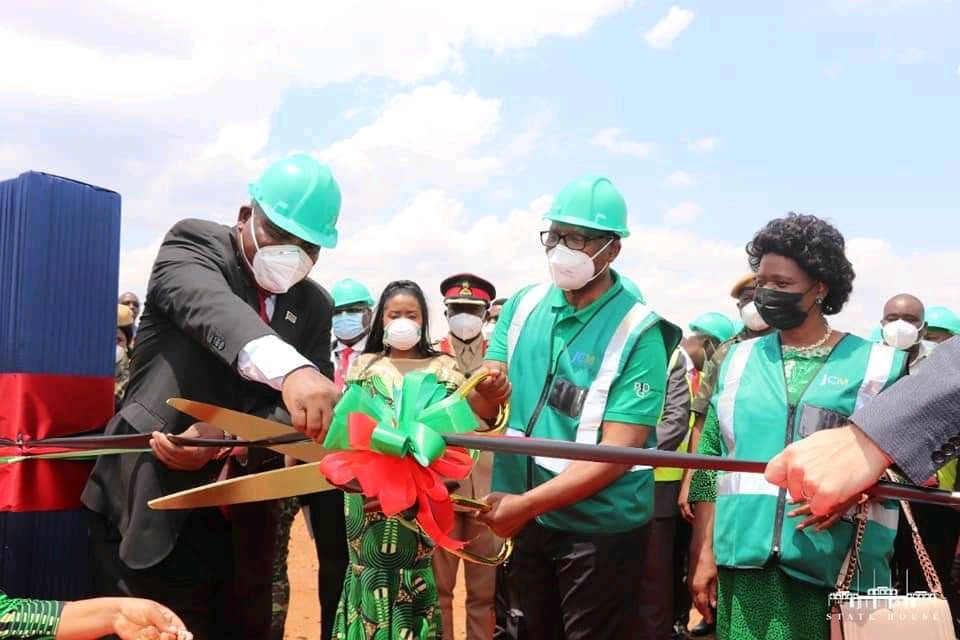
Southeastern Africa’s biggest solar PV plant opens in Malawi
President of Malawi, Dr. Lazarus Chakwera, officially inaugurated and commissioned the 60 MW Salima solar PV plant this week in Malawi’s Central Region. The Salima Solar project originated back in 2013 and entered the planning and design phase in June 2015. With 60 MWac, it is by far Malawi’s biggest solar plant and one of the largest solar facilities in Southeastern Africa. A Competitive International Tender While Canadian independent power producer (IPP) JCM Power had initially entered bilateral negotiations with Malawi’s state-utility Electrical Supply Corporation of Malawi Limited (ESCOM) for the project, Salima Solar is in fact the result of a competitive tender. A consortium led by JCM Power Corp. and InfraCo Africa with Matswani Capital won the project and developed and constructed the facility at a cost of over $75m. The same consortium was eventually selected to develop the 20 MWac Golomoti Solar, a project that broke ground in March 2021 and is considered a sister facility to Salima. Supportive Financing Structures To finance the facility, $6.5m was provided by InfraCo Africa while the PIDG provided technical assistance funding of $6.44m (including $6m of VGF and $440,000 of grants). On its side, the FMO provided $8.2m for the project through its Access to Energy Fund, used to finance construction. The project also benefited from guarantees issued by the Multilateral Investment Guarantee Agency (MIGA) amounting to $58.58m and covering 90% of the equity investments for up to 20 years. In July 2021, the African Trade Insurance Agency (ATI), under its Regional Liquidity Support Facility (RLSF), also announced a revolving liquidity guarantee that can be drawn following any payment delays by the national off taker, the Electricity Supply Corporation of Malawi Limited (ESCOM). A Pathfinder for Malawi’s Diversifying Energy Mix Salima Solar was awarded and developed when Malawi’s electrification rate stood at below 13%. The country continues to suffer from frequent power outages and over reliance on hydroelectric stations whose operations suffer from rainfall fluctuations. As a result, the Government of Malawi modernised its regulatory environment to attract private capital into the country’s energy sector and diversify the energy mix with additional sources of clean energy such as solar. A project like Salima is a true pathfinder in that regards and is critical to the country reducing its spending on expensive diesel generation and dependence on hydropower. Overall, the facility is expected to provide electricity to 1.4 million Malawians and support 600 jobs. It is now able to generate over 146 GWh of energy every year. Details on the Salima Solar PV Project are available in the “Projects” section within your Hawilti+ research terminal.
Read more »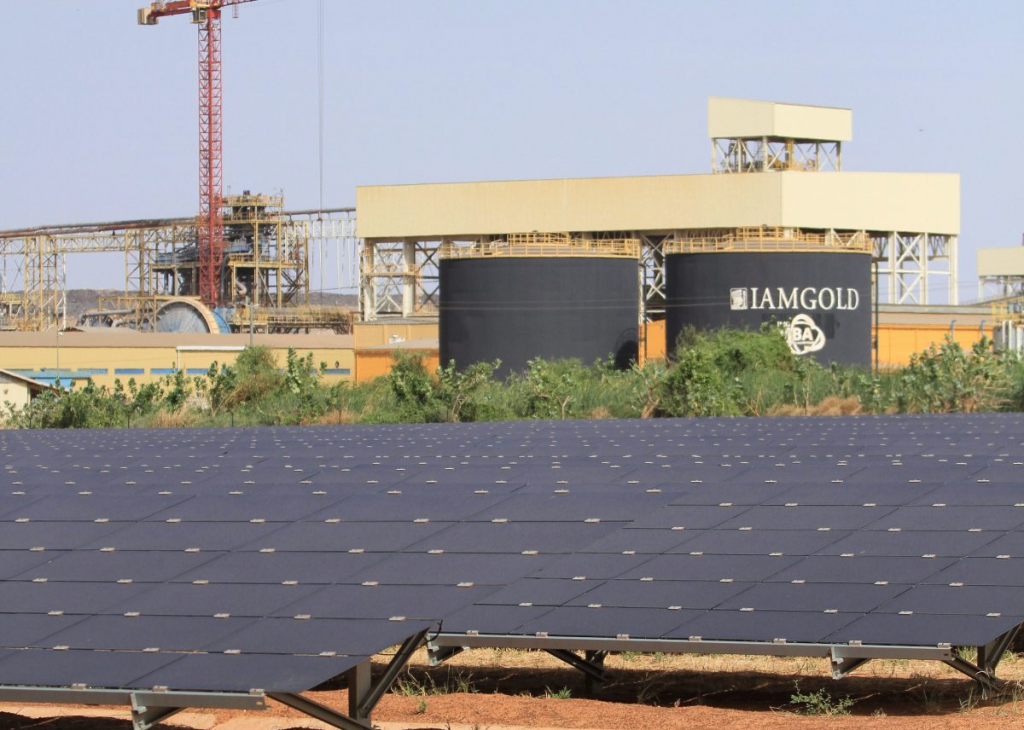
Chariot partners with Total Eren to offer clean energy solutions to mining companies in Africa
Chariot has signed binding key terms of a long-term joint-development partnership with Total Eren, the company said this morning. By working with Total Eren, Chariot intends to jointly originate and develop wind and solar projects for mining clients in Africa. The partnership will have an initial duration of three years and start on January 1st, 2022. It can then be extended for a further two years. Under the agreement, Chariot will have a right to invest between 15 to 49% into the co-development of projects. Earlier this year, Chariot has acquired the business of Africa Energy Management Platform (AEMP) for $2m. The renewable and hybrid energy project developer had an ongoing strategic partnership with Total Eren and both entities were already looking at a pipeline of 500 W of power to African mine operators. Under that partnership, AEMP had a right to invest in up to 15% project equity at cost in projects developed by both partners.
Read more »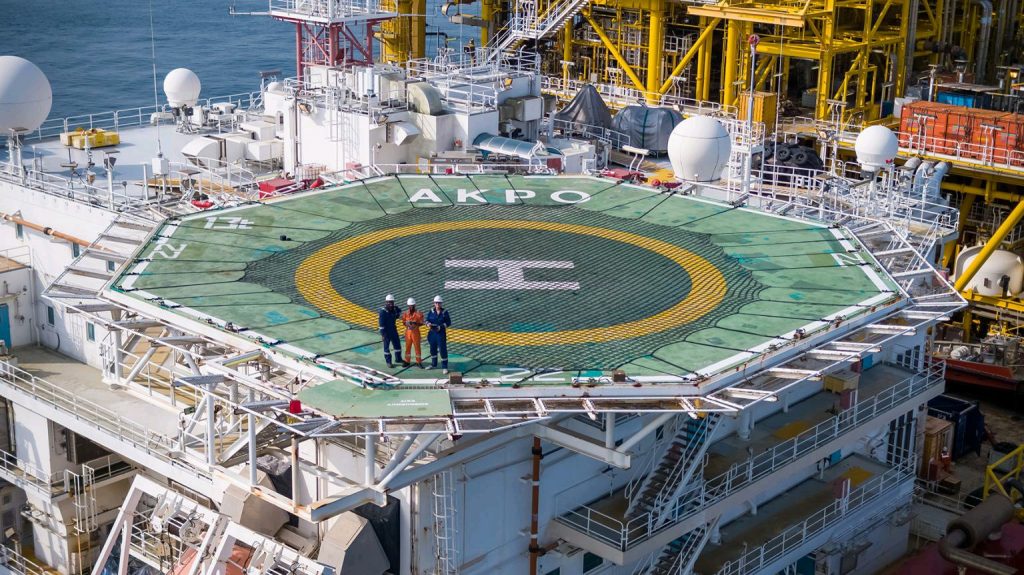
Africa Oil Corp. becomes cash positive less than two years after investment into Nigerian deep offshore
Africa Oil Corp.’s acquisition of a 50% interest in Petrobras Oil and Gas B.V (POGBV, now known as Prime) in 2020 for $520m is paying off. The Canadian independent has just become cash positive in Q3 2021, reporting a net cash position of over $15m. The performance was made possible thanks to AOC’s exposure to some of Nigeria’s biggest deep-water fields. When the Canadian independent acquired a 50% interest of POGBV last year, it benefited from an indirect 8% interest in the Chevron-operated OML 127 and 16% indirect interest in the TotalEnergies-operated OML 130 offshore Nigeria. These blocks contain the Agbami, Akpo and Egina deepwater fields, three of the continent’s biggest producing assets. Source: Africa Oil Corp. AOC started earning dividends from Q1 2020 onwards and benefited this year from the strong rebound in oil prices and the gradual lifting of OPEC quotas. Its average daily working interest production stood at 27,500 barrels of oil equivalent per day (boepd) in Q3 2021, generating two dividends worth $112.5m from Prime during the period. Since completing the acquisition of a 50% shareholding in Prime in January 2020, Africa Oil has already received nine dividends from Prime for a total amount of $350m. As a result, AOC was able to significantly reduce its corporate debt facility to only $23m, up from $141m at the start of the year. The company’s stock performance echoes that of its balance sheet. Its shares were trading at CAS$2.07 this morning, up from CAD$1.23 at the start of the year. Details on Africa Oil Corp’s projects across Africa along with the company’s financial and operational performances are available in the “Companies” section within your Hawilti+ research terminal.
Read more »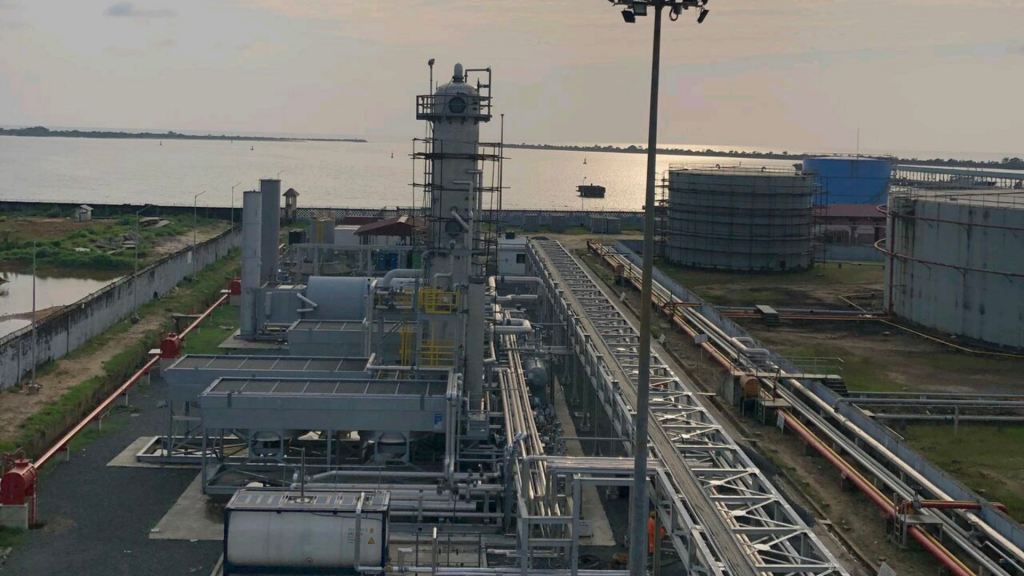
Conex Oil & Gas completes acquisition of TotalEnergies’ assets in Liberia and Sierra Leone
In a statement issued earlier today, Conex Oil & Gas has announced taking over with immediate effect Total Liberia Inc. and Total Sierra Leone Ltd. Both entities have been renamed Conex Oil & Gas Liberia and Conex Oil & Gas Sierra Leone. The move follows the signing of agreements with TotalEnergies back in March 2020 for Conex to acquire the French major’s assets in both countries. These notably consist of a network of 63 service stations, general trade fuel sales and petroleum products import and storage operations. In parallel, Conex has completed construction of its 10,000 barrels per day (bpd) refinery in Liberia’s capital Monrovia. The facility was fabricated in Houston by VFuels Oil and Gas Engineering before being shipped and assembled in Liberia. The company is currently sourcing crude oil feedstock before starting up commercial operations.
Read more »